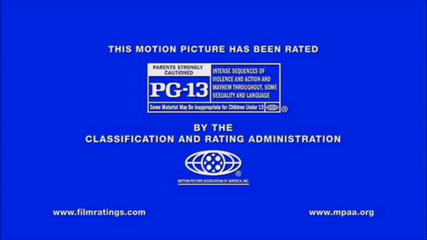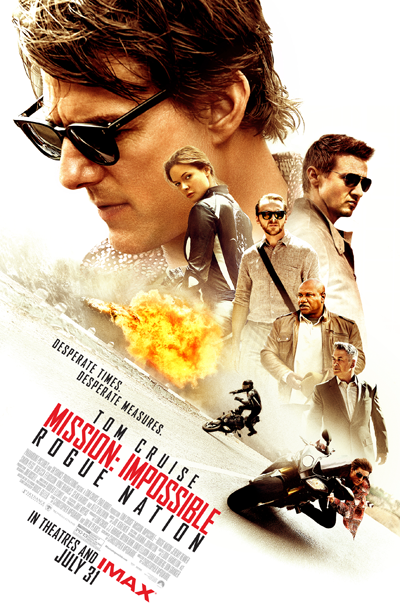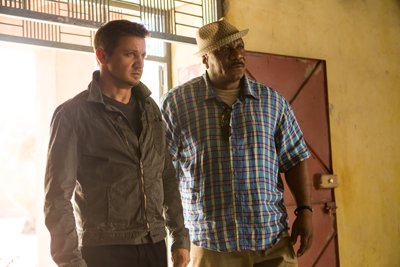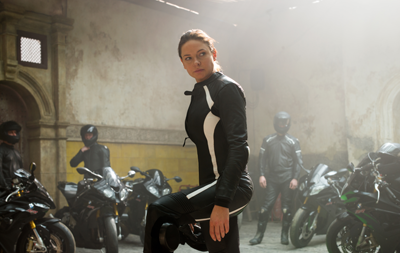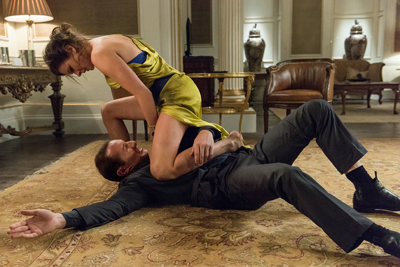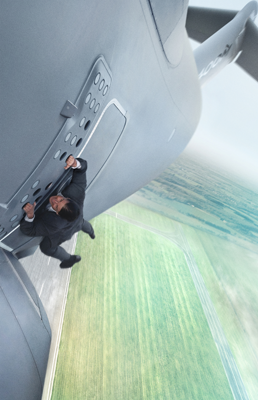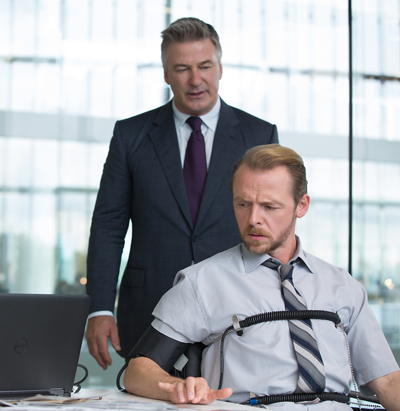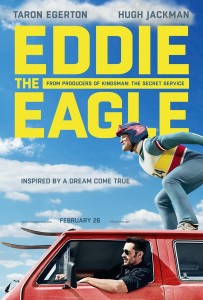
Inspired by the story of that most amateur of Olympians, Michael “Eddie” Edwards, “Eddie the Eagle” is the kind of feel-good dramedy that comes along every few years to remind us that even the Everyman can have his day. Much in the spirit of underdog films like 1993’s “Rudy”, “Eddie the Eagle” tells the story of a never-will-be who has his moment in the spotlight.
The eponymous lead character is played by the distinctly more chiseled Taron Egerton (“Kingsman: The Secret Service”), who mimics the original’s goggle-glass squinting, resting underbite-driven grimace-face, and happy-go-lucky attitude without making Edwards a complete caricature. As it is, it seems almost too good to be true that Edwards managed to make the impossible happen–to be the first Olympic ski jumper from England in nearly 60 years. He came from seemingly nowhere, a mildly accomplished skier who didn’t qualify for the 1984 Olympics and spent his off-slope time following in his father’s footsteps as a plasterer.
From an early age, Edwards ignores the misgivings and discouragement from those around him; much like the 22-year-old self portrayed by Egerton, a 6-year-old Edwards simply collects his things and heads for the bus station to go to compete once he sets his mind to it. His tradesman father (Keith Allen of “Trainspotting”) believes all these dreams nothing but folly and continually urges Edwards to focus on his plastering and build a career. Edwards’ mother (Jo Hartley of “This is England”) is one of the few people who consistently supports him (and, oddly enough, it’s really only three women in “Eddie the Eagle” who encourage him; the males are anywhere from ambivalent to downright hostile and bullying).
When he’s rejected by the British Olympic Ski Team as unsuitable (whether due to demeanor, lack of experience, or general class issues), Edwards is ready to hang up his skis until he realizes that ski jumping could offer him another avenue. With no other Brit poised to represent in that event for the 1988 Games, Edwards decides to move to Germany to train with some of the best in the sport. It’s there that he meets his primary on-screen foil, a boozy jerk of a slopes manager who turns out to be Bronson Peary, a fallen-from-grace former Olympian (“X-Men” alumnus Hugh Jackman, sporting an American accent). Edwards pursues Peary with the persistence of a love-struck teenager, hoping experienced guidance will far outstrip self-training. Where Edwards has limited ability and unparalleled tenacity around reaching his goal of competing at the Olympics, Peary has talent without discipline–although he’s awfully attached to his “jacket” (a flask of liquor sporting a faded American flag). It becomes clear that Peary let down not only the coach-to-end-all-coaches, Warren Sharp (a muted Christopher Walken), he let himself down.
Edwards’ mix of fascination and panic when trying progressively longer jumps shows that he isn’t completely without his wits, but he is fairly oblivious to the obvious danger posed by his über-novice status. This is evident as he describes ski jumping as “still skiing…just a bit higher.” Peary (who apparently is not intended to be representative of either/both of the real Edwards’ coaches from his training in Lake Placid, NY) sees Edwards as a fool: sixteen years too late to start training and completely out of his depth. Edwards is often the butt of jokes by his fellow jumpers, particularly the Norwegian team helmed by Bjørn (Rune Temte, the menacing Ubba of “The Last Kingdom”). Once Edwards finally breaks down Peary’s resistance and gains him as a coach, his effort begins in earnest. Of course, there are setbacks–including a spectacularly brutal wipe-out. Ski jumping, as they so often point out to Edwards, is for the brave and crazy, and he’s warned that the 90m jump would be more likely to land him in a coffin than on the winners’ podium.
For those of us who watched Edwards in the Olympics nearly 30 years ago, this story is somewhat familiar, and Edwards tends to trigger either amusement or resentment. Some of this is visible in the movie, where crowds in Calgary warm to his enthusiasm following landing an important jump–but where “Eddie the Eagle” fails to deliver is in truly laying bare how much backlash he faced. According to the real Edwards’ own accounts, he received threatening letters from fellow athletes who felt he made a mockery of the sport by taking the Olympic stage without paying years of dues in blood, sweat, and training. While you do see Edwards face some hazing and pranking, it’s not at a level where he seems to be thrown off by any real measure. Egerton’s Edwards brushes most of it off–if he registers it at all–not really processing the massive amounts of shade thrown in his direction by nearly everybody in his life. As close as you see him feel the weight of dismissal comes in one tear-filled phone call with his parents and a separate conversation with Peary where he protests: “I was kicked off every team I was on before I got a chance to prove myself.”
When it comes to deciding whether “Eddie the Eagle” is okay for kids, I’d probably say that it’s fine for many. The majority of the violence is limited to the types of jump wipeouts that comprised the “Agony of Defeat” in the old ABC Sports intros, and the sexual innuendo is represented primary by a clumsily dodged come-on attempt aimed at Edwards and a “When Harry Met Sally” deli-style moment for Jackman’s Peary. You’ll never look at a jump again without thinking of Bo Derek.
Overall, the message of “Eddie the Eagle” is that sometimes grit and determination are enough to reach life goals, although Edwards never expected to win gold. He wanted the chance to compete, and his very presence and ability to make it onto the scoreboard without crashing out was a miracle of sorts. The movie has a vibe that’s distinctly afterschool special, but it sports some impressive scenery and able acting on all counts–especially by Egerton. “Eddie the Eagle” is certainly one to watch for some inspirational viewing. It’s not 100% faithful to the story leading up to the Olympics, in terms of locations and people, but actual Olympic footage makes it into the film and the scenes of Calgary are based on what happened for the real Edwards. The synth-heavy soundtrack is pure-80’s, and a training montage set to Frankie Goes to Hollywood’s “Two Tribes” is derivative in the most delightful way (at least for those of us that are FGtH fans).
Three out of four stars.
“Eddie the Eagle” flies into theatres on Friday, February 26, 2016. It is rated PG-13 for some suggestive material, partial nudity, and smoking.

